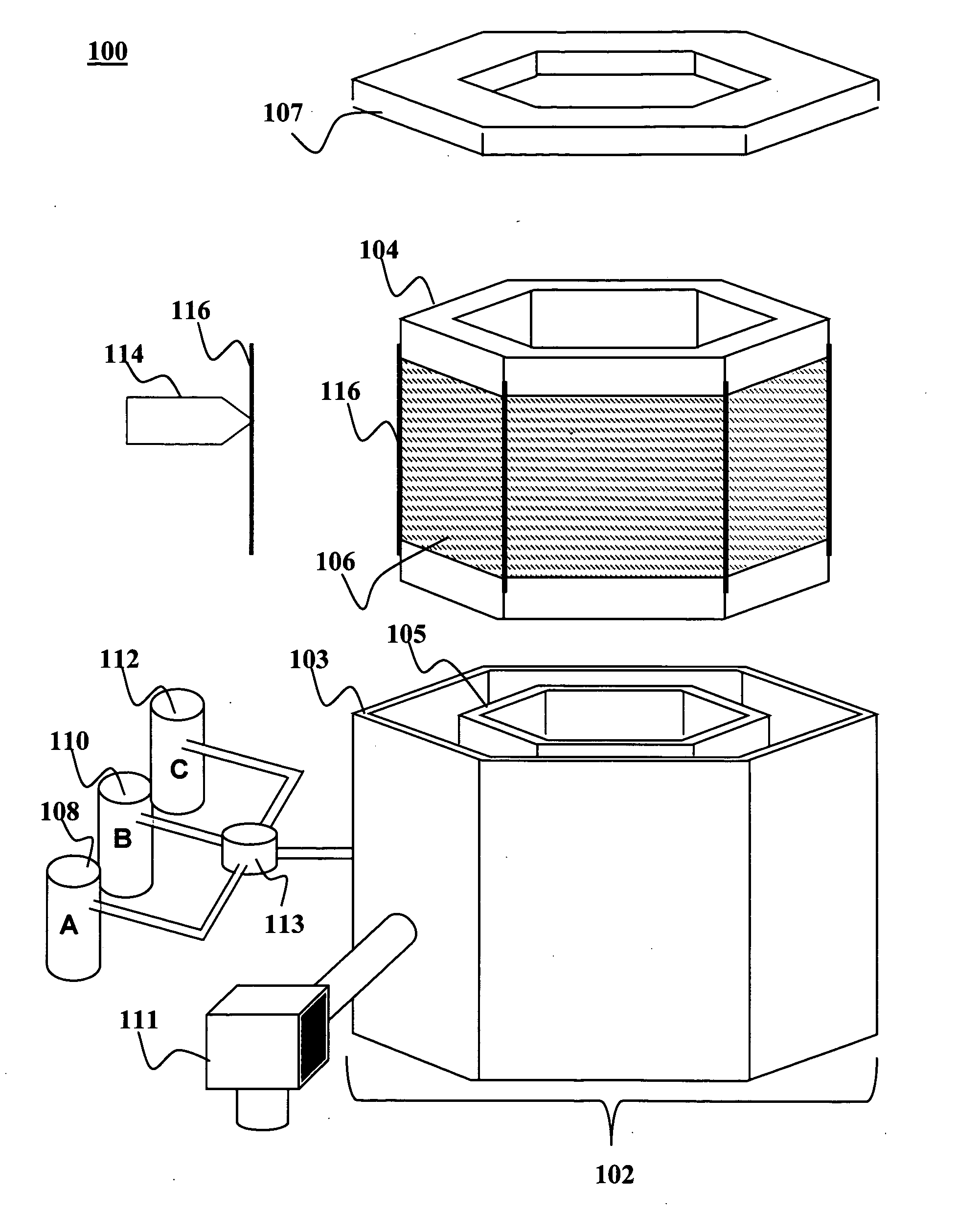Formation of CIGS absorber layer materials using atomic layer deposition and high throughput surface treatment
a technology of absorber layer and cigs, which is applied in the direction of sustainable manufacturing/processing, final product manufacturing, coatings, etc., can solve the problems of high level of ga in the middle of the cigs absorber layer negatively affecting device function, challenges and disadvantages, and the inability to control the stoichiometric ratio and achieve high volume production with prior art techniques
- Summary
- Abstract
- Description
- Claims
- Application Information
AI Technical Summary
Problems solved by technology
Method used
Image
Examples
Embodiment Construction
[0023] Although the following detailed description contains many specific details for the purposes of illustration, anyone of ordinary skill in the art will appreciate that many variations and alterations to the following details are within the scope of the invention. Accordingly, the exemplary embodiments of the invention described below are set forth without any loss of generality to, and without imposing limitations upon, the claimed invention.
[0024] According to embodiments of the present invention, an absorber layer may be formed on a substrate using atomic layer deposition reactions. An absorber layer containing elements of groups IB, IIIA and VIB may be formed by placing a substrate in a treatment chamber and performing atomic layer deposition of a a group IB element and / or one or more group IIIA elements from separate sources onto a substrate to form a film. A group VIA element is then incorporated into the film and annealed to form the absorber layer. The absorber layer ma...
PUM
| Property | Measurement | Unit |
|---|---|---|
| Temperature | aaaaa | aaaaa |
| Temperature | aaaaa | aaaaa |
| Thickness | aaaaa | aaaaa |
Abstract
Description
Claims
Application Information
 Login to View More
Login to View More - R&D
- Intellectual Property
- Life Sciences
- Materials
- Tech Scout
- Unparalleled Data Quality
- Higher Quality Content
- 60% Fewer Hallucinations
Browse by: Latest US Patents, China's latest patents, Technical Efficacy Thesaurus, Application Domain, Technology Topic, Popular Technical Reports.
© 2025 PatSnap. All rights reserved.Legal|Privacy policy|Modern Slavery Act Transparency Statement|Sitemap|About US| Contact US: help@patsnap.com



